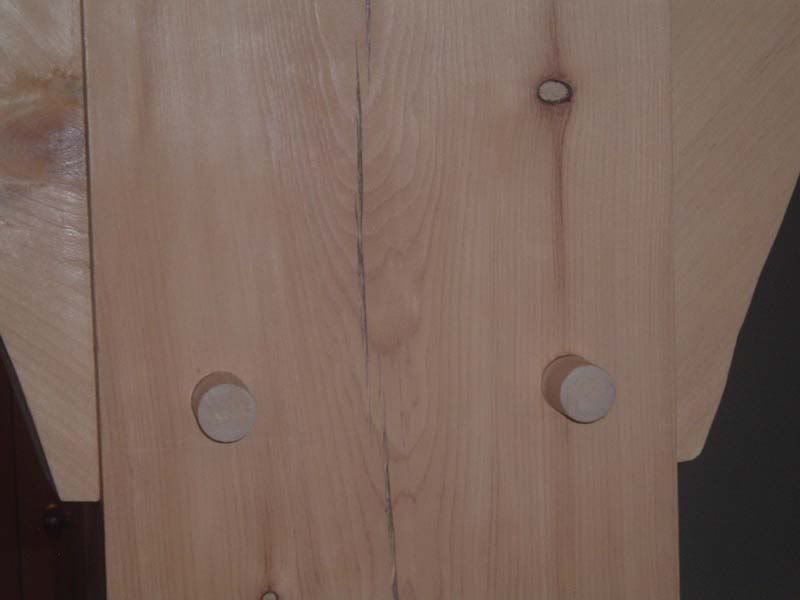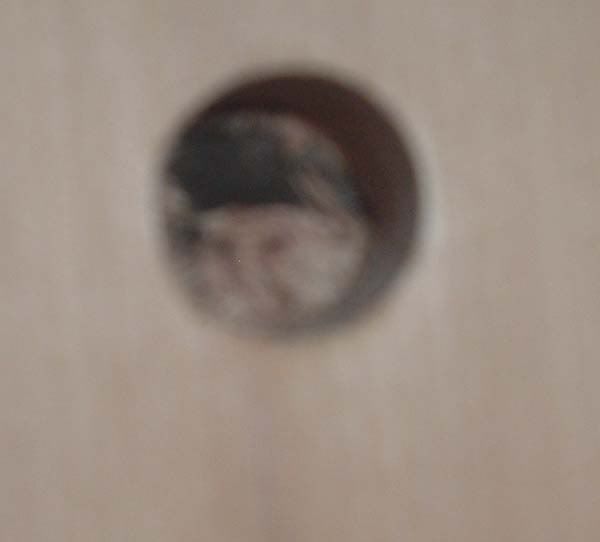Brett's house is a beautiful white pine frame with sips on the walls. The roof is has a standard 2x10 framing structure.
The pegs were 1" oak pegs or dowels most likely.
Here is a shot of the pegs as they appear:

As you can see they ends of the pegs haven't been chamfered, and when you remove a shorten peg the inside end hadn't been chamfered either. This end when pounded in would, it appears, to catch on the back side of the mortise once through the tenon.
As shown here in this terrible photo:

With a little extra pounding it probably would have come through the hole and been outside the post, but there is, of course, the risk of blowing out the side of the posts. And I'd have to assume that they didn't want to risk it.
As has been discussed here, in the past, and again in an on going discussion, the pegs on the end of the braces may not be doing much to help the frame except during the raising. In order for a peg to be needed, in the case of a tension joint, the opposing brace joint has to fail in compression. This is not likely if the joints and brace lengths are cut correctly.
My advice to Brett was to get a smaller dowel, and push the short peg out and replace it with a longer tapered oak peg to "catch" both sides of the mortise and then cut off the excess peg as needed, especially in the area near the kitchen where these would be at shoulder height.
One peg was at the end of a tie beam, but with inspection of a photo of the bare frame on raising day, we could see that this tie was additionally held to the post with lag bolts coming in from the outside at a second floor joist pocket.
And Brett had seen them using other bolts or lags when he was there before the frame had been covered up.
It is my opinion, that this framing crew was just a little lazy and didn't point, or chamfer the ends of their pegs, and just tried to cover it up with short hole filler pegs....
Brett may create his own replacement pegs and one at a time push out the short pegs and replace them. He may slide the replacement peg in and use it as a peg pusher to remove the shorten peg depending on which side the shorten peg is on.
It wouldn't seem to matter that much as to which side he inserts the replacement pegs as most of the joints I saw seemed to have the mortise and tenon in the center of the beam...
This isn't something that he wants to create a law suit out of, but wanted to understand what effect if any these short pegs would have on his frame. And with the sips covering the walls, and spanning over posts so that one side of the sip was screwed to one interrupted tie beam and the other side of the sip was screwed to the adjacent interrupted tie, these joints would have a very hard time fail.
And if the framing crew who erected his frame ever read this they should chamfer or point their pegs a little more and not use short hole filler pegs any more, this is very unprofessional....
With a few pegs replaced, Brett and his wife can sleep soundly at night....
Jim Rogers